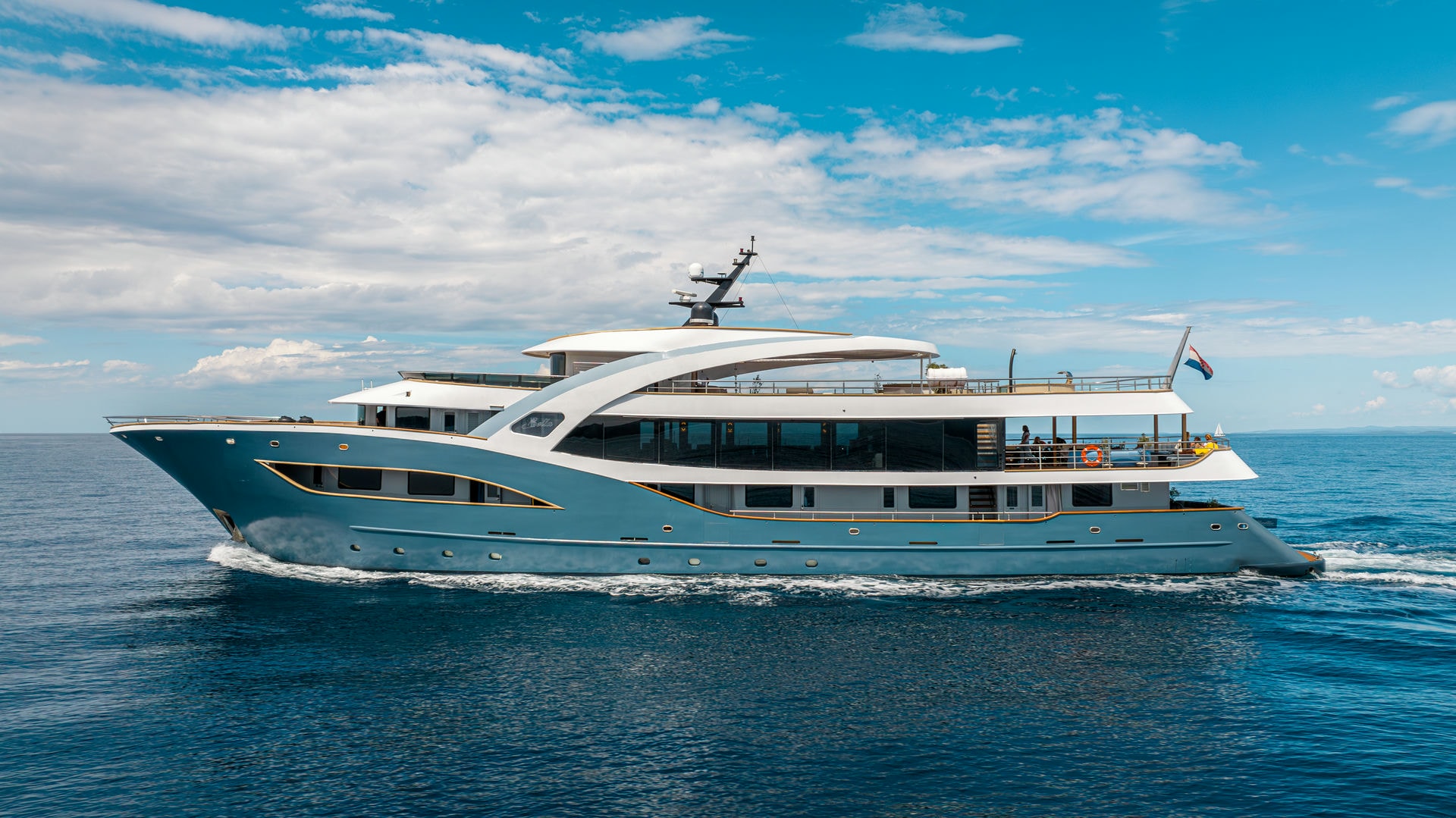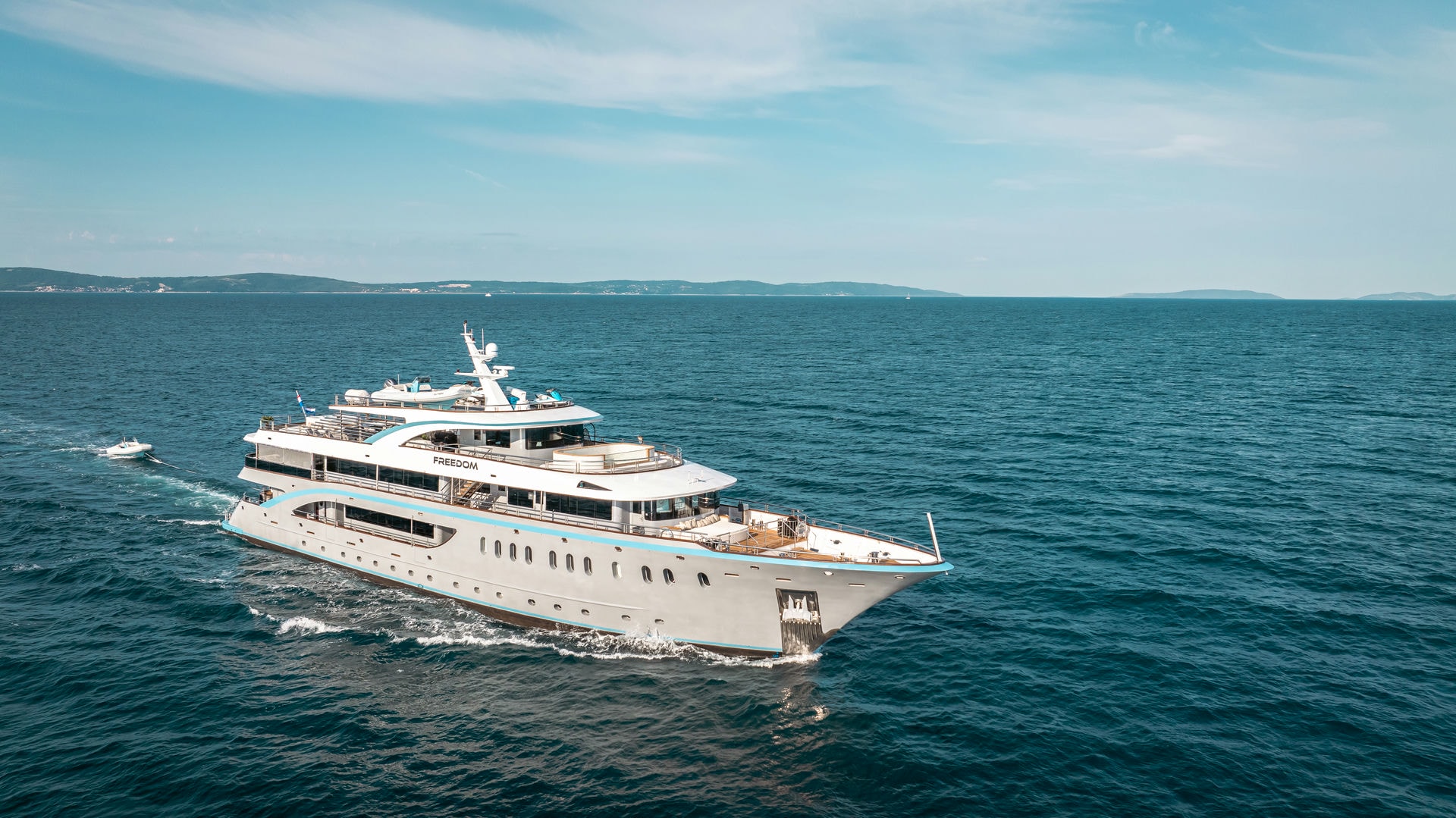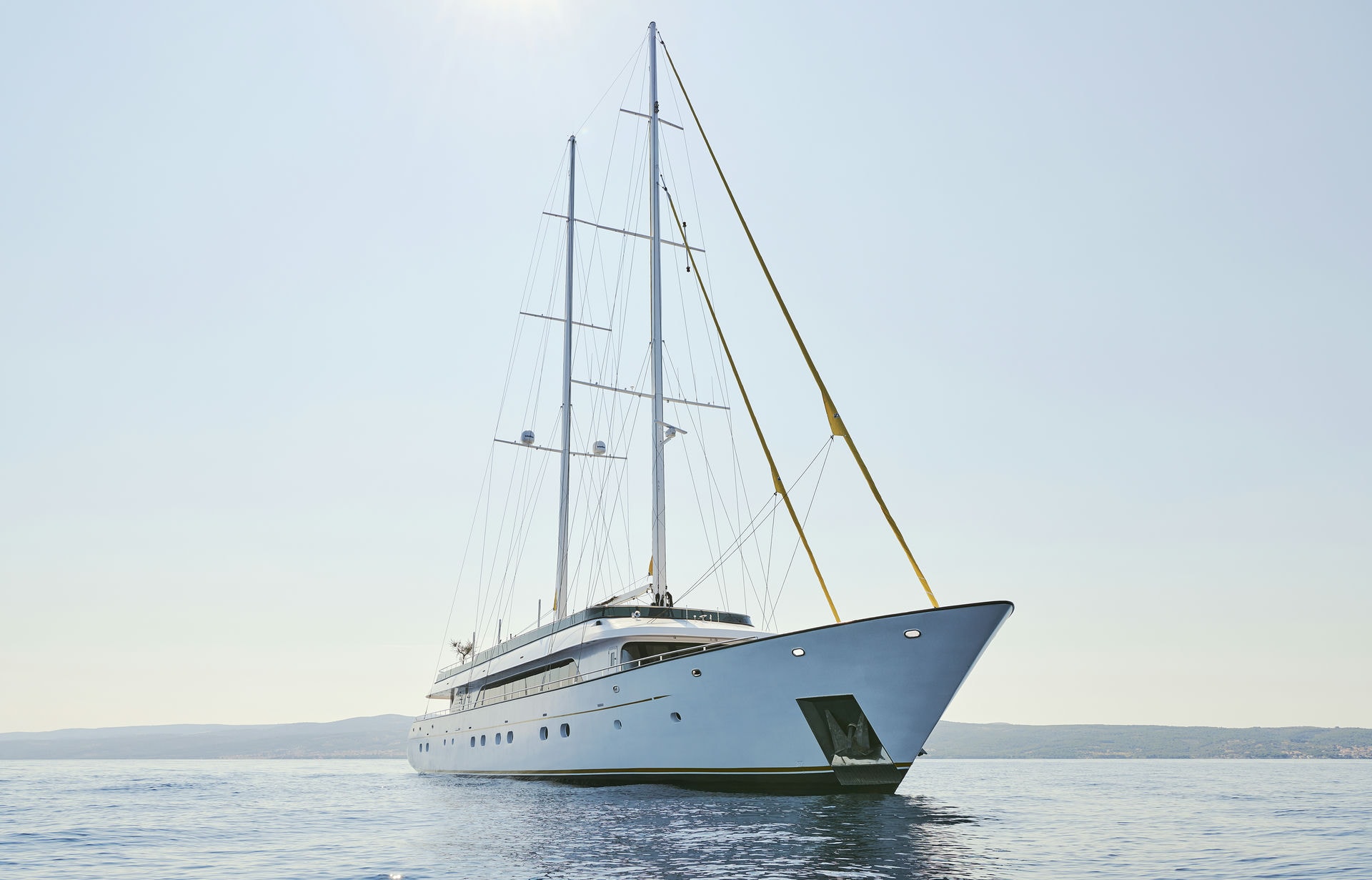TURKISH COAST LINE
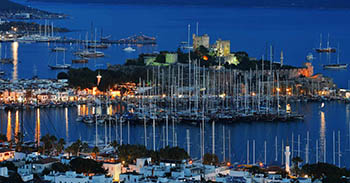
BODRUM:
Bodrum has a history that goes back to the 12th century B.C. The city was called ‘Halicarnassus’ and it was the birthplace of Herodotus; the ‘Father of History’ who lived in the 5th century B.C. The ‘Mausoleum’ of King Mausolus (350 B.C.) one of the Seven Wonders of the Ancient World is in this city. The only structure that survived from the Classical Era is the Amphitheatre. It is one of the oldest theatres in Anatolia with a capacity of 13.000 guests and it is still hosting many shows and concerts for the art-lovers of Bodrum. Another place that you should visit when you arrive in Bodrum is the landmark of the city, the ‘Castle of Saint Peter’. It is one of the best preserved pieces of architecture with a history dating back to the Medieval Ages. ‘Myndos Gate’ through which Alexander the Great entered Halicarnassus is another place that you should not miss to visit.
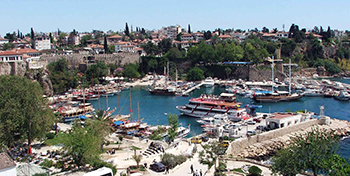
ANTALYA:
Antalya is the fifth most populous city in Turkey located on Anatolia’s flourishing southwest coast bordered by the Taurus Mountains. Antalya is the largest Turkish city on the Mediterranean coast with over one million people in its metropolitan area.
The city that is now Antalya was first settled around 200 BC by the Attalid dynasty of Pergamon, which was soon subdued by the Romans. Roman rule saw Antalya thrive, including the construction of several new monuments, such as Hadrian’s Gate, and the proliferation of neighboring cities. The city has changed hands several times, including to the Byzantine Empire in 1207 and an expanding Ottoman Empire in 1391. Ottoman rule brought relative peace and stability for the next five-hundred years. The city was transferred to Italian suzerainty in the aftermath of World War I, but was recaptured by a newly independent Turkey in theWar of Independence.
Antalya is Turkey’s biggest international sea resort, located on the Turkish Riviera. Large-scale development and governmental funding has promoted tourism. A record 12.5 million tourists passed through the city in 2014. Antalya was the host city for the 2015 G-20 summit.
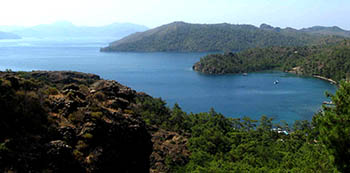
BENCIK :
Bencik is located at the narrowest part of the peninsula that divides the Hisaronu Gulf from the Gokova Gulf but it is located on Hisaronu side. In 550s B.C. the Cnidus people wanted to dig a tunnel in the narrowest land piece of the peninsula between the Hisaronu Gulf and the Gokova Gulf as a defence line against the Persians. In that way, they would make two peninsulas one island and the defence would be easier. They started with diligence and put in a lot of effort; however, in the end they could not manage and the city was conquered by the Persians.
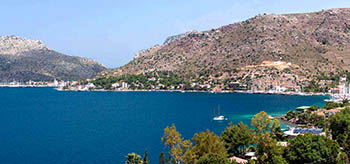
BOZBURUN :
Although quieter than Marmaris bay’s two centers of tourism of international renowned (Marmaris and İçmeler), Bozburun is a precious discovery for visitors due to its natural beauties and the exceptional flora. Its thyme honey is famous across Turkey. It has a small yet lovely harbor is also one of the key stops on the popular nautical tourism route of Blue Cruise. Its pristine sea is surrounded by coves. This area was popular and suitable for sponge-diving but nowadays the people of the island are no more interested in sponge-diving as it is not financially beneficial and is dangerous. In recent years sponge-diving has been replaced by gulet tourism and nowadays Bozburun Gulets take their place in this sector.
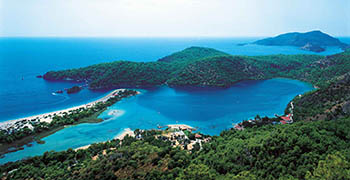
CLEOPATRA (SEDIR) ISLAND :
This unique island with its small beach and unbelievable clear water is like an open-air museum. You can see the city walls, the temple from the time of Dorians’ reign (later restored as a church), the amphitheatre with 1.500 guest capacity and some vaulted historical buildings. You can walk around the wrecks of pillars with antique writings on them or the ancient stones decorated with reliefs. Cleopatra Beach, located on this island, has a very special kind of sand that can only be found in the deserts of Northern Africa. According to the myth, King Antonius brought the sand from Egypt via sea for Cleopatra.
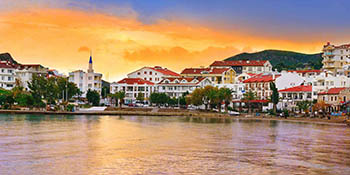
DATCA :
Datca was founded by the Dorians who came from Aegean Sea to the southern coast of Ionia in the 7th century B.C. The island has no humidity at all and has fresh air with plenty of oxygen. The historian Strabon was right when he remarked of Datca’s weather: “God would send his beloved servants to Datca to live longer.” According to a myth, while the Spanish pirates were passing by the coast of Datca, they disembarked people with Hansen’s disease in Sarıliman Bay and these abandoned people recovered from their disease with the help of the clean weather of Datca.
Datca Peninsula is a prized location for tourists visiting Turkey, especially by sea, with the beauty of its many coves and larger bays, which are favoured ports of call for those undertaking the celebrated Blue Cruise along Turkey’s spectacular southwest coast.
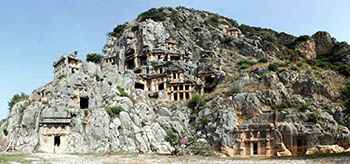
DEMRE (MYRA) :
Demre is a town and its surrounding district in the Antalya Province on the Mediterranean coast of Turkey, named after the river Demre. Demre is the Lycian town of Myra, the home of Saint Nicholas of Myra, the historical man later developed into the figure of Santa Claus. The district was known as Kale until it was renamed in 2005. A substantial Christian community of Greeks lived in Demre (Myra) until the 1920s when they were forced to migrate to Greece after the Population exchange between Greece and Turkey.The abandoned Greek villages in the region are a striking reminder of this exodus. Abandoned Greek houses can still be seen at Demre and the regions of Kalkan, Kaş and Kaya which is a Greek ghost town. A small population of Turkish farmers moved into the region when the Greek Christians were forced to migrate to Greece. The region is popular with tourists today particularly Christian pilgrims who visit the tomb of Saint Nicholas.
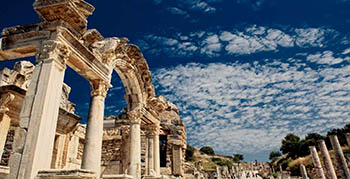
EPHESUS :
Ephesus was an ancient Greek city on the coast of Ionia, three kilometers southwest of present-day Selçuk in İzmir Province, Turkey. It was built in the 10th century BC by Attic and Ionian Greek colonists. During the Classical Greek era it was one of the twelve cities of the Ionian League. The city flourished after it came under the control of the Roman Republic in 129 BC. The city was famed for the Temple of Artemis (completed around 550 BC), one of the Seven Wonders of the Ancient World. In 268 AD, the Temple was destroyed or damaged in a raid by the Goths. It may have been rebuilt or repaired but this is uncertain, as its later history is not clear. Ephesus was one of the seven churches of Asia that are cited in the Book of Revelation. The Gospel of John may have been written here. The city was the site of several 5th century Christian Councils. It is also the site of a large gladiators’ graveyard. House of Virgin Mary and Celsus Library which is built in 117 AD as a monumental tomb for Gaius Julius Celsus Polemaeanus, the governor of the province of Asia; from his son Galius Julius Aquila,was having 14.000 book capacity and has two floors, are a favorite international and local tourist attraction.
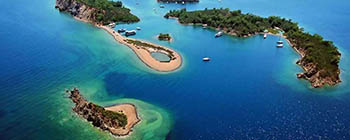
FETHIYE :
Fethiye, which was known as Telmessos in the ancient times, was the most important city situated on Lycia’s western border with Caria. It is believed that the city’s name comes from Apollon’s son Telmessos. As the name suggests, the city was the city of light and was famous for its prophets. Fethiye stretches in a half circle along the bay protected by 12 Islands.
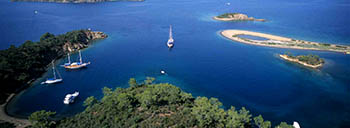
GOCEK :
Set at the deepest point of the gulf of Fethiye, Gocek nestles at the foot of the pine clad mountains looking out over the ’12 islands’ of the bay. Gocek which has recently started developing in tourism is becoming a famous yachting harbour both in Turkey and in the world. One of the pleasures of a visit here is a stroll around the Marina to admire the array of boats of all shapes and sizes moored here. The waterfront is lined with bars and restaurants. With Dalaman Airport is only 30 minutes away, Gocek makes an ideal base while waiting for guests or visitors.
The Bay of Skopea, which stretches out from the village, is a perfect place for cruising; its twelve islands offer abundance of sheltered coves. Tersane Island features the partially submerged ruins of a Byzantine monastery and an ancient boat-yard. There is a restaurant on the island, making it a favourite overnight anchorage. Thought this area is called the 12 islands, there are, in fact, far more than that and you could easily explore a different one each day of your holiday.
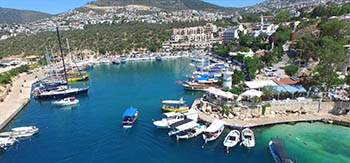
KALKAN :
Kalkan is a town on the Turkish Mediterranean coast, and an important tourist destination. The area includes many historical sites (such as Tlos and Kekova) and many fine beaches (including Patara Beach & Kaputaş Beach). Kalkan was an important harbour town until the 1970s as the only seaport for the environs. It declined after construction of Fethiye road but revived after the emergence of the tourism industry in the region. British newspaper The Independent listed Kalkan among the best tourist destinations, especially for those seeking a romantic vacation .
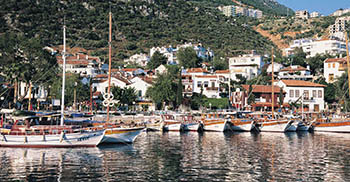
KAS :
Kaş (pronounced ‘Kash’) is a small fishing, diving, yachting and tourist town, and a district of Antalya Province of Turkey. As a tourist resort, it is relatively unspoilt. The town of Kaş is on a hill running down to the Turquoise Coast of southwestern Turkey. Kaş was founded by the Lycians, and its name in Lycian language was Habesos or Habesa. Kaş itself is a quiet pleasant town with its blue sea and narrow streets scented with jasmine flowers. There are plenty of little guest houses, quiet cafes serving home cooking, or small bars to relax after a day’s scuba diving. Kaş has an annual arts festival, jazz concerts in the Hellenistic theatre and the Kiln Under the Sea arts collective have held underwater ceramics exhibitions here. Kaş is one of the leading spots for scuba diving in Turkey.
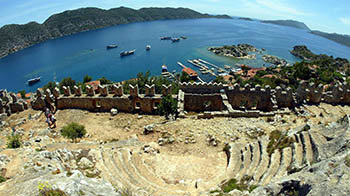
KEKOVA :
Kekova, also named Caravola is a small Turkish island near Demre (Demre is the Lycian town of Myra) district of Antalya province which faces the villages of Kaleköy (ancient Simena) and Üçağız (ancient Teimioussa). The Kekova region was declared a specially protected area on 18 January 1990 by Turkish Ministry of Environment and Forest. All kinds of diving and swimming were prohibited and subject to special permits from governmental offices. In later years the prohibition has been lifted except for the part where the sunken city is.
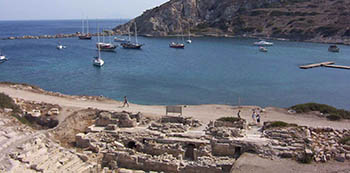
KNIDOS (CNIDUS) :
Cnidus was a developed city in science, art and architecture. Eudoxos; a very popular astronomer and maths professor, Dr. Euryphon, Polygontos; a popular painter, Skopas and Bryaksis of Faros; the most famous sculptors of the era, Sostrates; the architect of Alexandrian light house -one of the seven wonders of the World- and Ktesias; the doctor who saved the life of a Persian king from a disaster lived on this island. Dr. Euryphon and his students founded the second biggest medical science school in Cnidus. The island also hosts the largest sun clock of its time which was erected by Eudoksos. Cnidus was the home for Aphrodite’s monument and in those times the city was famous for brothels and became popular among sailors and Arabic tradesmen. You may also take a walk on the shore to see the ruins.
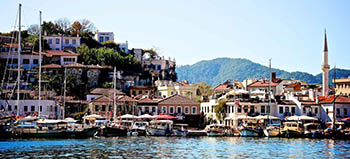
MARMARIS :
Marmaris, which was built upon one of the antique Karian cities called Phyckos, has been under the rule of many different civilizations. The most valuable work of art that you can see today is Marmaris Castle dating from 1577. There is also a mosque and an 8-room caravansary covered with arches from the Ottoman Period. The ruins of the Antique times lie on Asar Hill; a small, low hill located on the northern side of the city. Being one of the best-known touristic places of Turkey, Marmaris has also a large marina and night life.
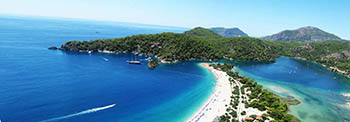
OLUDENIZ :
Ölüdeniz (official translation name Blue Lagoon; literally Dead Sea because of being calm even during storms) is a small resort village in the Fethiye district which is in the Muğla Province, the South West coast of Turkey on the Aegean Sea to the south and the high, steep sided Babadağ Mountain, 14 km (9 mi) south of Fethiye. The town is a beach resort. Ölüdeniz remains one of the most photographed beaches on the Mediterranean. It has a secluded sandy bay at the mouth of Ölüdeniz, on a blue lagoon. The beach itself is a pebble beach. The lagoon is a national nature reserve and building is strictly prohibited. Ölüdeniz is famous for its shades of turquoise and aquamarine, and is an official blue flag beach, and is frequently rated among the top 5 beaches in the world by travellers and tourism journals alike.
